|
Trowbridge named Whiting Public Engagement Fellow; foundation to provide $50,000 toward development of free heritage tourism app
Dr. David Trowbridge, an associate professor of history at Marshall University, has been selected for The Whiting Foundation’s Whiting Public Engagement Fellowship. Trowbridge said the $50,000 fellowship will be used to further develop Clio, a free mobile application and website that connects the public with information about historical and cultural sites around the United States. “I hope that Clio’s growth throughout West Virginia and beyond demonstrates the potential of technology created by university faculty at regional universities like Marshall,” Trowbridge said. “While Clio is free and non-commercial, it offers the potential for economic development—especially in a state such as ours that is working to promote tourism.” Since Trowbridge created Clio in 2012, it has grown into a national resource with more than 20,000 users a month and 10,000 curated entries. The Whiting Foundation supports faculty in the humanities who embrace public engagement as part of the scholarly vocation, according to Executive Director Daniel Reid. “Dr. Trowbridge is the perfect example of what we’re looking for,” said Reid. “His project is one that is thoughtfully designed to reach the public with deep and meaningful content. The fact that he built this starting with his own personal time and funds is inspiring.” Trowbridge said developers are working to expand Clio’s functionality to include features such as personalized itineraries that offer walking and driving tours. “Until now, mobile apps offered walking tours that required people to start and stop at a preset location and follow a preset route. Thanks to the generosity of the Whiting Foundation and the talented team of developers at Strictly Business Computer Services, Clio will change that,” Trowbridge said. “Together with original content from hundreds of universities, libraries, historical societies, and other organizations, Clio will allow people to experience history as they enjoy a walk through any city in America.” For more information about Clio, visit www.theclio.com. Originally posted on http://www.marshall.edu/ucomm/2016/04/19/marshall-faculty-member-named-whiting-public-engagement-fellow-foundation-to-provide-50000-toward-development-of-free-heritage-tourism-app/ PAWV released its Request for Proposals for a Historic Preservation Revolving Loan Fund Program Feasibility Study. All proposals are due Friday, May 20, 2016 with the award date scheduled for Friday, June 3. Thank you the 1772 Foundation for providing funding for this project.
The complete request for proposals is available below: REQUEST FOR PROPOSALS: HISTORIC PRESERVATION REVOLVING LOAN FUND PROGRAM FEASIBILITY STUDY April 19, 2016 – Preservation Alliance of West Virginia Organizational Overview Formed in 1982, the Preservation Alliance of West Virginia (PAWV) is the only statewide, grassroots, nonprofit organization dedicated to the preservation of the Mountain State’s cultural heritage. PAWV’s formal mission is, “With a commitment to preserve our unique cultural heritage, PAWV and its members work to save our past for the present and future, supporting and promoting historic preservation through education & outreach, advocacy, preservation tools, and heritage tourism.” The website is www.pawv.org and blog is https://preservationallliancewv.wordpress.com/. Submission Deadline 5:00 p.m. EST on Friday, May 20, 2016. Responses may be submitted electronically via email to [email protected] or by letter to 421 Davis Avenue, Elkins, WV 26241. Scope of Work Goals A completed feasibility study answering the following questions (at a minimum):
Scope of Work
Required Deliverables A written report of research data and a completed feasibility study with recommendations (both presented in one hard copy and one digital copy format). Assumptions and Agreements
Required Proposal Format The proposal must contain the following sections: Technical, Costs, Qualifications, and References.
Deadlines Questions from bidders must be submitted by email to project coordinator by Monday, May 9, by 5:00 p.m. EST. All relevant questions and responses will be compiled and emailed to all known bidders by Friday, May 13. Proposal must be date- and time-stamped by 5:00 p.m. EST on Friday, May 20, 2016. Project coordinator and point-of-contact Danielle LaPresta: [email protected], 304-345-6005 Preservation Alliance of West Virginia, 421 Davis Avenue, Elkins, WV 26241 Basis for Award of Contract
Award Date: Friday, June 3, 2016 Limitation This RFP does not commit PAWV to award a contract or to pay costs incurred by bidder in the preparation of a proposal to this RFP. PAWV may accept other than the lowest bid, waive minor informalities, and award a contract based only on the written proposal without any discussions with bidder. Issuance of a contract will be subject to the approval of the PAWV Board of Directors. PAWV reserves the right to reject any or all proposals because of non-responsiveness to RFP requirements, insufficient PAWV funds, evidence of unfair bidding procedures, financial insolvency of bidder, or if, in the opinion of PAWV’s Executive Director, the best interests of the program will be served.
VOLUNTEERS NEEDED: THE HELEN APARTMENT CLEAN-UP DAY HAS BEEN SCHEDULED FOR APRIL 11TH 20153/17/2015
We GROw, Inc. (Winding Gulf Restoration Organization), the non-profit organization for the Helen community of Raleigh County, is in the process of obtaining a historic property. An apartment building dating to the 1920’s represents Helen’s role in the heyday of coal mining. Helen remains one of the last surviving intact coal communities of the Winding Gulf Coalfield. The apartment building is a historic staple of the community, and once restored it can potentially be an important resource for community and the public. Helen is situated along the Coal Heritage Highway – a project of the National Coal Heritage Area Authority.
On April 11th volunteers will come together to clean the building of debris. Volunteers will also help to architecturally mothball the structure to protect it from vandalism and the weather. The Planned activities will make a big impact on the community by preventing vandalism and improving its visual appearance. The project is a collaboration of We GROw, The Preservation Alliance of West Virginia (PAWV), National Coal Heritage Area Authority, The West Virginia Department of Environmental Protection, The Raleigh County Commission, and The Raleigh County Office – West Virginia State University Extension Service We GROw, a fully registered 501 (c) 3 non-profit organization, was founded in 2004 and has accomplished many positive outcomes in the community; including development of a park and the installation of a Coal Miner’s Memorial. Cleaning and boarding up this building is their next improvement effort. You can find more information about WeGROw on their Facebook page at https://www.facebook.com/WeGROwWV . Two Preserve West Virginia AmeriCorps (PAWV) members Tiffany Rakotz and Nicole Marrocco have been working to organize volunteers and logistics for the project. To learn more about The Preservation Alliance of West Virginia visit their website at http://www.pawv.org/ To volunteer or ask questions please contact Preserve WV AmeriCorps Member Tiffany Rakotz at (734) 787-6784 or [email protected]
According to the competition website, the contest offers an opportunity for individuals, teams of design industry or non-industry professionals, emerging professionals, students, or community development nonprofits to explore plans that include historic preservation, adaptive and sustainable land reuse for public benefit, business or education innovation. The Top O Rock: Spirit of Reinvention design competition sponsors include WVSU Extension’s Economic Development Center, Kanawha Valley Historical and Preservation Society, and CWest Properties, LLC. Supporters include: City of Charleston, Historic Landmarks Commission, Preservation Alliance of WV, West Virginia Foundation for Architecture, US Green Building Council-WV, and Create West Virginia.
“Basically, we’re looking for bright ideas that are financially feasible,” says Sarah Halstead, the West Virginia State University sustainable economic and community development specialist who has spearheaded the drive to save the building. “Ever since Top O Rock became prominently visible in Charleston, in the late 1960s, it has been talked about, written about in national and international publications, visited, admired, and has often been at the center controversy because of Elden’s daring vision,” Halstead explains. The iconic residence and design studio was purchased several years ago by a private investor who has entertained several different business ideas for future use, however, like mid-century modernist structures around the world, much work is required to restore the building and bring it up to code. “Many modernist structures are facing the wrecking ball at this moment. We have a rare opportunity to work with the property owner to call for innovative ideas, including business models supporting the preservation of the building and the surrounding 13 acres of wooded land, just minutes from downtown. Yes, the building was vandalized, but the vandalism is not a deal breaker. Remember, this is a concrete, steel and glass structure. It’s tough. International experts agree that Top O Rock is a significant example of modernist architecture that should absolutely be restored,” Halstead says. With the permission and assistance of the property owner, she has marshaled the energies of architects, students, business people and historic preservationists to save the building. “It’s surprising to many that the building has come close to destruction, but it’s actually not an unusual situation. The public is only beginning to understand the importance of modernist architecture around the world. This is a great opportunity to raise local awareness of our own architectural and cultural treasures. They define us, and our places.” The design competition will close on May 8, 2015. Judges include Christine Madrid-French, expert member of the scientific committee on 20th Century Heritage for the International Council on Monuments and Sites (ICOMOS), and Peter Aeschbacher of Penn State Stuckeman School of Architecture. Peter is also the director of design at Penn State’s Hamer Center for Community Design. Local judges will be announced, along with additional events related to the competition. There is a series of short talks on related subjects scheduled for Tuesdays at noon throughout the months of March and April. An online fundraising campaign is underway, offering a variety of ways individuals and organizations can support this preservation and community design effort. A virtual tour of the property will live stream on Monday, March 9, 2015 and will be archived for viewing throughout the competition. Additional information will be added to both the TopORockwv.com website and Facebook.com/TopORockwv page on an ongoing basis. For complete information, visit the competition website, which includes a comprehensive calendar. BECKLEY, W.Va. — Engineer Chris Galitz will present a program on the maintenance of historic brick buildings at 5:15 p.m., March 12 at the Downtown Beckley Business Association’s bi-monthly meeting.
Most buildings in the city’s downtown historic district are of brick, so association members thought that engaging a masonry expert would be of particular benefit, David Sibray, an association spokesman, explained. “Property owners in downtown are concerned about the feasibility of maintaining their buildings, especially now that they know that state and federal financing is available,” Sibray said. A professor of engineering at Virginia Tech, Galitz has authored articles on the subject of brick maintenance and is a frequent expert witness on construction matters. All downtown property and business owners and tenants and members of the general public are invited to attend the program, which will be held at the Tickety-Boo Mercantile at 337 Neville St. Association. Members are asking that all who attend consider donating $10 to help cover the speaker’s fee and related costs. Sibray said upcoming programs will focus on the economics of national historic districts. For membership information or to make arrangements to attend, please contact Jim Chambers at 304-573-4332 or David Sibray at 304-575-7390. This article was published in Charleston Gazette on Sunday, Sept. 28, 2014. It is being reproduced here with permission.
By Marta Tankersley Hays, Staff Writer for the Charleston Gazette Across West Virginia there is an evolution of sorts underway, aimed at returning majestic old theaters that were once the center of towns large and small to their glory days. “Almost every community — even coal towns — had their own theaters,” said Danielle LaPresta, executive director of the Preservation Alliance of West Virginia. “They were a large part of the people’s lives. From the days of vaudeville, they were a major place for people to gather in the past. With the growth of the arts community, I think they will once again serve that purpose.” Once the center of community entertainment, historic theaters fell out of fashion with the introduction of modern multiplex facilities. A revitalization movement throughout West Virginia hopes to see these grand structures, once again, serving their communities. From its main office in Elkins, the preservation alliance has worked with the West Virginia Division of Tourism and local communities to develop a Historic Theatre Trail, which is in the process of being updated now, to “promote the trail to tourists and showcase these old theaters as a fascinating and entertaining aspect of West Virginia’s heritage,” said Andrea Bond public information specialist at WVDT. Theaters that make the cut, 21 so far, must be on the National Register of Historic Places. The Keith-Albee Theatre in Huntington, the Alpine Theatre in Ripley and the West Virginia State University Capitol Center Theatre in Charleston are all on the current list. Places like the LaBelle Theatre in South Charleston — now housing the city’s convention and visitor’s bureau — and the Alban Arts and Conference Center in Saint Albans, aren’t there yet, but are providing a community gathering place now as well. The Keith-Albee Theatre Built in the late 1920s by brothers Abe and Saul Hyman at a cost of $2 million, the Keith-Albee, listed on the NRHP in 1986, is a masterpiece of Spanish Baroque design by famed Scottish architect Thomas Lamb who specialized in vaudeville theaters during their heyday. It wasn’t long after completion, however, that the Great Depression set in and the demise of Vaudeville shortly followed suit, said Derek Hyman, third-generation owner and president of the Greater Huntington Theatre Corporation. He said it was a struggle for his grandfather, Abe Hyman, and great- Uncle Saul, to keep the grand 2,600 seat facility. “They had interest in other smaller theaters in the area and sold some of them off one by one to keep the Keith-Albee,” Hyman said. Changing with the times was key to survival, so the theater was equipped with a Wurlitzer pipe organ once silent films came into vogue. Sold and recovered just recently, the original instrument is being prepped for installation as part of the restoration project. “In the 1970s, they started building theaters with six or seven screens,” Hyman said. “In order for us to compete, we had to add screens.” Careful not to destroy the elaborate interior, his father Jack created four smaller theaters inside the Keith-Albee. In the 1990s, Derek Hyman gifted the Keith-Albee to the Marshall University Foundation, said Robert Edmunds president of the Keith-Albee Preforming Arts, Inc., a non-profit 501 (c3) corporation, said. “When the Keith-Albee Performing Arts Center took it over in about 2007, volunteers came in and took out the other auditoriums,” Hyman explained. KAPAC has been working to renovate the theater and bring in varied performance artists ever since. “We are trying to raise $12 million for the project now,” Edmunds said. “So far we’ve put $700 or $800,000 into it. The auditorium interior is in good repair. The previous owners [the Hyman family] made sure it was kept up. We’ve put on a new roof, put in handicapped accessible restrooms, bought new staging equipment for live performances, restored the exterior sign so it looks like a chaser and more.” Recently the grand theater has been host to Marshall University graduations and convocations, the Huntington Symphony Orchestra, film festivals and more. Marshall University Artists Series calls the Keith-Albee home today. Scheduled performances include Jay Leno, Frankie Valley and the Four Seasons and Dancing With the Pros. For more information on upcoming shows visit their website at www.marshall.edu/muartistseries. The Alpine Theatre The Alpine was built in 1936 when movie tickets cost just $.25 and popcorn was $.10. In those days it served the community as a movie theater and country music play house, said Monnie Landis, former executive director of MSR. It was also used to bring national and international news to movie-goers in the form of newsreels, before the main show, “especially back in World War II times, in the days before an evening news was broadcast and nobody had TVs around here,” said MSR board member Ron Waybright. “That was about the only way people could get the news at that time,” he added. Landis said the theater brings back memories to the townspeople. “People like to come back and see what we’ve done to it and tell stories of when they were younger, growing up and that kind of thing,” Landis said. “When I was a girl, [in the 1940s and ‘50s] we lived in the country and we probably came once a month,” she said. “Dad would bring us into town to the movie. It was quite an experience for us to get to come because all the kids were here and, of course, we knew everybody. “The manager at the time, Goldie Crum, was quite a lady,” Landis continued. “If somebody was making a disturbance in the audience, she’d come down the aisle with her little flashlight and point it to them, give them a warning. If that didn’t work, she’d call their parents and they came and picked them up.” Waybright was frequenting the Alpine in the 1970s and ‘80s. “The Alpine was a tremendous part of our life when I was a kid,” Waybright said. “Every Friday night my parents would drop us off and we would come to the movies while they would do their shopping. “There are a lot of great memories growing up here,” he continued. “I know the last movie I saw here was ‘Ferris Bueller’s Day Off’ [which was released in 1986].” Used as a storage facility for 19 years, the Alpine Theatre on Main Street, across from the city park, was purchased by Main Street Ripley, a non-profit organization, in 2003 and listed on the NRHP in 2004. “We wanted to see it brought back to life and people enjoying it,” Landis said. The purchase and restoration was made possible, first, by the $40,000 contribution of Bernard Anderson, who grew up in Ripley and has since relocated to Texas. Grant funding secured from the Department of Culture and History, private fund raisers and volunteer labor totaling $310,000 were also necessary to bring the historic facility new life. Today, the Alpine is used for a variety of purposes. “We use it mainly for concerts,” Waybright said. It also serves as a venue for special viewings of classic Christmas movies during the holidays and other special events, he said. Like at many other re-purposed historic theaters, a church rents it for Sunday services. For more information, visit mainstreetripley.org. WVSU Capitol Center Theatre Listed in the NRHP in 1985, Capitol Theatre is, perhaps, the granddaddy of them all. Originally called the Plaza Theatre, it opened to vaudeville and other traveling shows in 1912. By 1921, the theatre was remodeled with the addition of a Wurlitzer pipe organ and projector to accommodate silent films. Shortly after a fire, and with the advent of “talkies,” the theater was wired for sound in the late 1920s. Like other historic theaters, however, the Capitol was forced to stop acting solely as a movie venue when multiplex theaters took over the movie market. In 1983, it became home to Mountain Stage, a West Virginia Public Broadcasting musical performance show. By 1991, the theater was given to WVSU. “West Virginia State University maintains and manages the Capitol Center Theatre,” said employee Gary Smith. “We do everything from concerts to movies to live musicals to lectures.” They also reach out to the broader community. Now Capitol Center Theatre is home to the Contemporary Youth Arts Company, which produces up to seven shows annually, he continued. Since the theater has been in continuous use, there are remnants of the past throughout the building. The projector room is equipped with modern digital technology, but still houses two huge Peerless Reflector Arc Lamp Vitaphone 35mm movie theater projectors from the 1930s era that illuminates the film with an actual flame, Smith said. “The University hires a guy to come in an operate these for us,” he said. “If we get a 35mm film, it might come in two or three cans with six or seven rolls of film in it. That used to be the standard.” And then there are the ghost stories. “I’ve heard noises,” Smith said. “I’ve heard footsteps when I’m the only one in the building. “I haven’t seen anything, but there’s been stories and I’ve heard noises. And, yes, I do think it’s haunted,” he continued. “From what I understand, there used to be a mansion on this property and a little girl who died while she lived on the property. Her ghost haunts the balcony and her dad haunts the stage. “I’ll be down in the dressing room and hear footsteps on stage,” he said. “I come running up the steps and out the building! I don’t stay around to find out what’s going on up there,” he said laughing. “At midnight, and I’m the only one in the building trying to lock up — I hear noises — I’m going out the building.” For more information, visit wvstateu.edu/About-WVSU/Community/Capitol-Center.aspx. The Alban Arts and Conference CenterThe vision shared by St. Albans Mayor Dick Callaway and Adam Bryan, managing director of the Alban Arts and Conference Center, is to “make arts the economic driver for the city,” Bryan said. “We are trying to create a visual and performance arts center here on Main Street,” he added. The Alban, built during the time when segregation still existed, was the “white” theater. Today it is host to creative people from all segments of society. What draws them in isn’t just the performances of live theater, it’s also the wide array of classes offered there. Classes, mainly for elementary and middle school students, run in 12 week semesters in the fall and again in the spring at a rate of $200 per class. “The fastest growing class is pre-acting for 3 to 6 year olds,” Bryan said. Class topics range from improvisational acting to stage combat to makeup artistry. “This semester we have 100 students with the majority coming in from Putnam County,” he said. “We are outgrowing our four walls now and hope to expand to infuse arts into the St. Albans community.” The Alban partners with the Children’s Theatre of Charleston, the Appalachian Artist Collective and others. “We encourage other creative folks to come play with us,” Bryan said. “The big thing we try to do here is offer something creative for everyone, young and old, conservative and liberal,” he continued. “One show every year you’ll enjoy no matter who you are.” For more information visit them Online at albanartscenter.com. La Belle Theatre The biggest movie of 1939, “Gone With the Wind,” was one of the first films ever played at the La Belle Theatre in South Charleston’s downtown business district, which opened that same year near the iconic Indian burial mound. “When ‘Gone With the Wind’ came out, they said, ‘This is going to be a block-buster movie.’ What they meant by ‘being a blockbuster movie’ was that people would be lined up around the block,” said Bob Anderson, executive director for the city’s Convention and Visitor’s Bureau. They were right. “Gone With the Wind” was the first blockbuster movie of all time and people in the city helped make history all those years ago. The La Belle, named for the daughters of its original owner, has been a place for the community to gather for 75 years. And if Anderson has anything to do with it, the theater will keep welcoming folks for years to come. The city purchased the La Belle in 2003 and began restoration with special attention to details from old photographs, he said. “I had the marquee made exactly like the marquee was years ago,” Anderson continued. That’s not all. The city has installed all new seats, new carpets and tile, new lights and even a new high definition digital projector. The theater space has also been re-purposed over the years. During the 1990s it was owned by a church, but now that the city owns it, they have a vision to bring it “back to life again as a working theater.” They have also created an art gallery and museum. “One of the things I’m so happy about here at the LaBelle Theatre is that we’ve added a lot of our old pictures of our town and we have an art museum here too,” Anderson explained. Depicting history back to the 1700s, the exhibits and other events continue to bring people to the venue. The LaBelle was host to the International Film Festival earlier this month and frequently offers musical performances. It may be rented for conferences and special events. When people attend events at the theater, it has a positive economic impact, Anderson said. “I’m just thrilled that we are able to redevelop the theater,” he said. “We hope to make it a multipurpose theater for all kinds of people to use it.” For more information visit southcharlestonwv.org/labelle-theatre. “It’s important to preserve the Keith-Albee, and other historic theaters,” Edmunds said. “At one point in time, there were 4,000 to 5,000 theaters built in various architecture styles. Now only 300-400 are in existence. The rest have been torn down. They are just too expensive to keep maintained.” The mission of the Division of Culture and History is “to preserve, protect and promote interest in the cultural and historic resources that help us tell the story of West Virginia’s past,” said Caryn Gresham, deputy commissioner of the West Virginia Division of Culture and History. “The Historic Theater Trail gives our visitors an itinerary to follow, if they want to do that, as well as an established list of preserved historic theaters that still offer programs and events,” she continued. “Having this information makes it easier for people to pinpoint the sites they want to visit and decide when the best times for their trips should be.” For a complete listing of the Historic Theatre Trail visit wvcommerce.org/travel/thingstodo/history/historic-trails/historictheaters.aspx. Reach Marta Tankersley Hays at [email protected], 304-348-1249 or follow @MartaRee on Twitter. – See more at: http://www.wvgazette.com/article/20140928/GZ05/140929397/1116#sthash.WsgvlPPb.dpuf By Malina, Preserve WV AmeriCorps In my last post I explained how I, a newly minted PAWV Preserve WV AmeriCorps member, was able to travel to Japan to interview a woodworker about his life, his craft, and his American friend, Janell Landis. As I knew very little Japanese going in, and my project partner, Paula, is a historian of Japan and has studied the language for nearly eight years, I decided to let her do the talking and relegated myself to equipment duty and appreciative observer of the sites. Skipping over the nitty-gritty travel details, I will say only that my first, and most lasting, impression of Japan was how clean everything was. On the train ride north from Tokyo it was nearly impossible to distinguish the old buildings from the new, not just because of a combination of government-led housing construction and modernist concrete architectural design, but because there was no trace of dirt on building walls from pollution and many structures seemed freshly painted—it was all so clean. Walking around the city of Sendai, and later Akiu, I remarked to my personal translator and cultural guide, Paula, that there was so little litter. And she replied that it always amazed her that, despite the fact that there are very few public garbage cans, littering is very frowned upon in Japanese society. People just carry their trash with them over the course of the day and throw it away at home or work. This was by far the most noticeable difference to me in terms of urban spaces, which I have spent a lot of time thinking about since my tenure at Main Street Fairmont. The mountains of the Tohoku region where Sendai sits are surprisingly reminiscent of Appalachia. We were fortunate to come at a time of the year when everything was green and the weather was sunny and mild. As is evident above, I found the built environment of Japan to be fascinating, especially the small town of Akiu which had, in addition to the traditional Japanese inn where we stayed, several high-rise apartment buildings in a town of roughly four concentrated blocks. However, architecture was not the cultural resource we had come to document.
Oral History is an energy-intensive process for interviewer and subject. We interviewed Hiroi-sensei for a total of 6 hours over two days. The rest of the time we spent at his home was taken up by exploring the work on sale in his shop, touring the other shops nearby, and meeting some of the people in Akiu who spend their time helping to preserve the artisan traditions of Japan. Hiroi-sensei lives in a planned neighborhood specially designed to house artisan masters and help them sell their art for a living. Each artisan lives in a small house with an adjoining shop. Other kinds of traditional Japanese artisans live and work in this ‘craft village’ as well. We were able to patronize two kokeshi doll makers, a woodworker, a furniture maker, a fabric artist, and others. The village also included an information center with some of the artisans’ work on display and free tea and coffee for visitors. On our last day at the Akiu Craft Park we were able to sit down and talk with a young couple who volunteer their time at the information center and manage the Akiu Craft Park Facebook page. The young man, Takahashi-san, works at the local TV station and produced several short documentaries about the artisans in Akiu, including Hiroi-sensei. These young people are working consciously to promote Akiu, Sendai, and the larger Tohoku region as a viable tourist destination for Japanese people. The Japanese economy is significantly boosted by domestic tourism, but since the Tohoku earthquake and tsunami that hit Sendai in 2011, many Japanese people have been avoiding travel to the region. By educating the public on the availability of traditional crafts in Akiu, the community there hopes to foster an atmosphere of preservation. In his own way, Hiroi-sensei is also a preservationist, his family has passed down the particular way of making edo-goma, and he is passing it down to apprentices, like Janell and the two young people he is currently teaching, Maida-san and Misa-san. His process and materials are the same as those his father used and therefore, that process and the artworks he creates can be a similar window into history as any historical work of art or architecture. His process is interpretation while at the same time his art can be interpreted: though not historical themselves, they are artifacts ofhistory. We hope that, through our own efforts and those of Takahashi-san and others like him, traditional artisans like Hiroi-sensei and his neighbors will continue to practice their work and enrich Japanese culture for generations to come. By Rodney, Preserve WV AmeriCorps During the week of June 16th to the 20th, I set out to participate in a hands on preservation project in the Monongahela National Forest. The project was focused on rehabilitating a historic shelter on the top of a high, overlooking mountain. I was joined by one other PreserveWV AmeriCorps member, Sami, as well as the Preservation Alliance’s VISTA, Alex. We experienced various levels of accomplishment throughout the week. Undeniable however, we found the work was honest and progress was evident, but in real life projects, there is no telling what surprises you’ll find. The site chosen for this project was a historic Civilian Conservation Corps (CCC) built shelter. The cabin is located on the top of a high ridge point giving 360 degree views of the surrounding forest. Because of this location, the shelter was used by forest fire patrols surveying the area from above in the nearby fire tower. The cabin was built by the CCC around 1931. It is made up of one main room, a small front porch, and attic area above the living space. There is evidence of wood stoves but due to vandalism, all that remained inside were a cabinet and limited shelving.
We began cleaning up trim pieces and wood window pieces. To our surprise, we found the new wooden windows ordered by the park service were much too big for the frame. Project supervisor, John Rossi, led me through the process to measure and cut down the sashes. I learned to assemble to rail system and eventually installed all three windows.
By Rodney, Preserve WV AmeriCorps
Preservation Alliance of West Virginia carried out a workshop to help put the finishing touches on windows at the Old Traveler’s Rest near Burlington, WV. This was the final step of the restoration project which began back in 2012. PAWV staff were accompanied by three volunteers to support the efforts. Thursday, June 26th was the first day of the two-day workshop. The day began with an educational session by Statewide Field Services Representative, Lynn Stasick. Lynn’s presentation included the proper use of wood consolidates and other treatment techniques using the Abatron line of wood care products. Immediately following was a discussion of paint history and chemistry. To round out the morning, Lynn demonstrated hands-on methods of the type of work occurring during the workshop. Work included using a router tool to install weather stripping along crucial edges of the wooden windows. Other volunteers also worked to remove paint and clean up exterior and interior window sills and trim. The next day saw the completion of weatherization and treatment of the window sills to restore the wood. Some priming and painting will complete the window restoration. Volunteers joined the efforts of the Mineral County Historical Foundation, directed by Foundation President, Frank Roleff and longtime friends of the foundation. The work of the Foundation has focused on raising funds and beginning restoration of the original section of the structure. The building was built in two segments, the first in 1810. The original intention was serving travelers traveling along the Old Northwestern Turnpike between Parkersburg, West Virginia and Winchester, Virginia. PAWV was fortunate to be joined by three volunteers. The most coincidental volunteer was Alex Dye of Morgantown whose Great-Grandparents lived in the house at one time. Lindsy Whittaker also joined the crew, looking to gain hands-on experience to supplement her recent degrees in History and Museum Studies from Fairmont State University. Julie DiBiase, AmeriCorps with the Appalachian Forest Heritage Area, who is currently serving with Arthurdale Heritage, Inc., volunteered both Thursday and Friday. Looking for information on recruiting PAWV volunteers and staff for your preservation projects, contact [email protected] for more information. |
News and NotesCategories
All
Archives
May 2024
Subscribe to our mailing list to receive e-news updates on historic preservation news and events in West Virginia.
|
Get Involved |
Programs |
Contact UsPreservation Alliance of West Virginia
421 Davis Avenue, #4 | Elkins, WV 26241 Email: [email protected] Phone: 304-345-6005 |
Organizational Partners:
© COPYRIGHT 2022 - PRESERVATION ALLIANCE OF WEST VIRGINIA. ALL RIGHTS RESERVED.

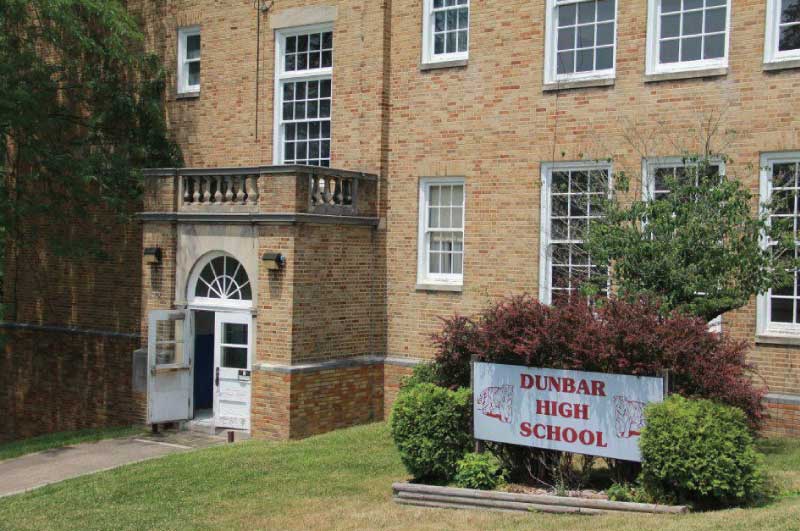
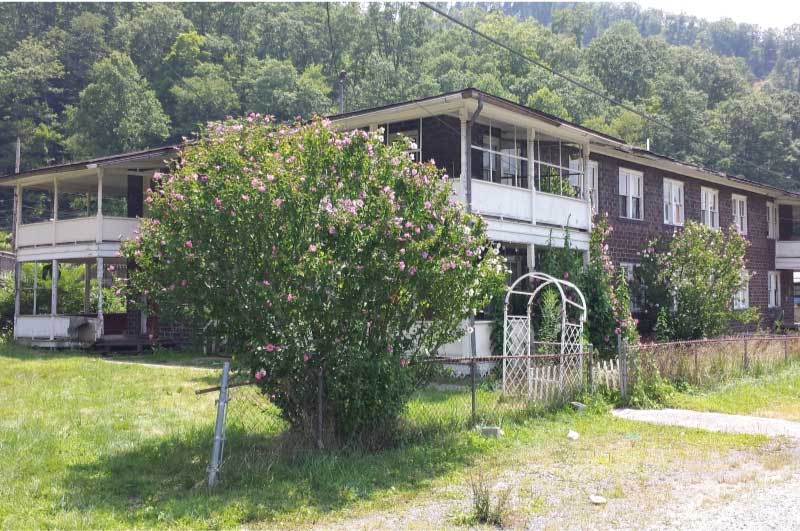
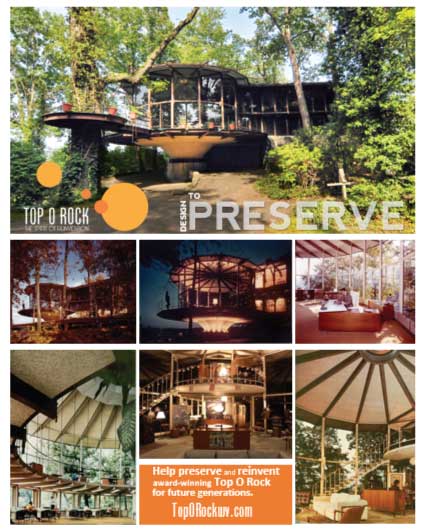
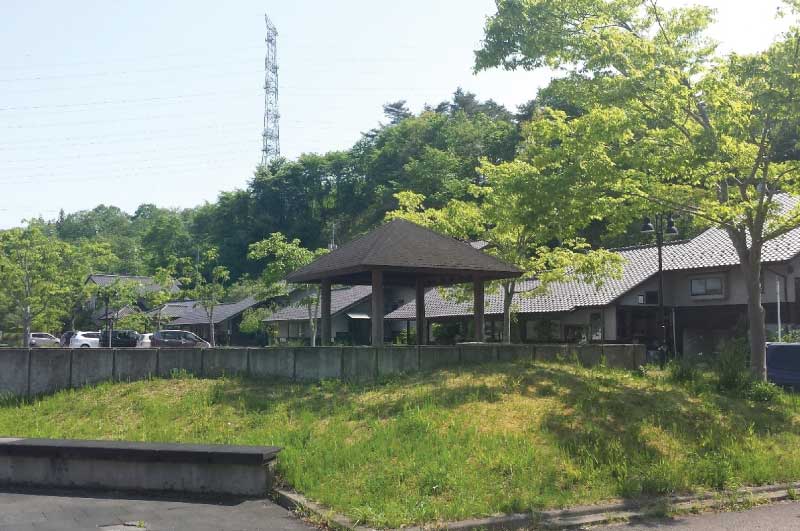
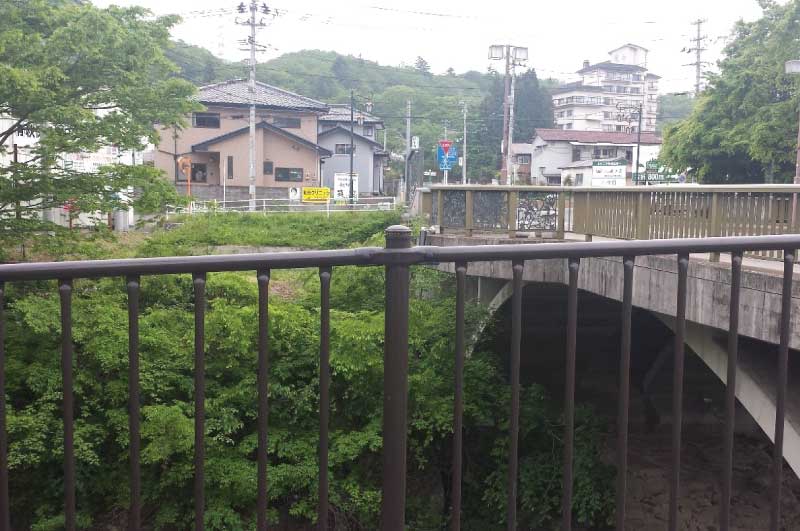
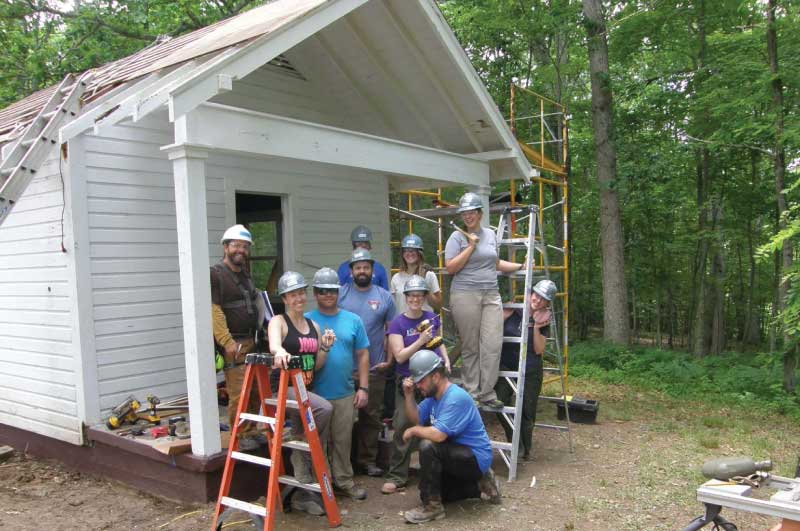
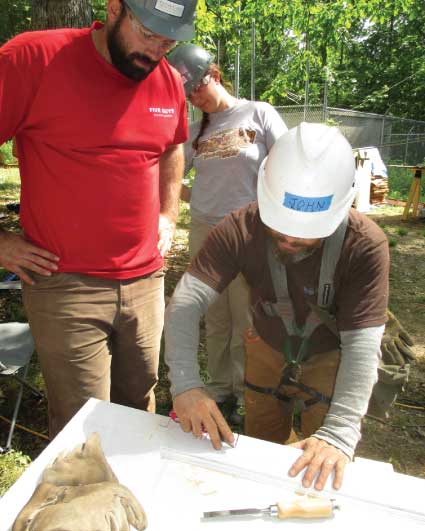
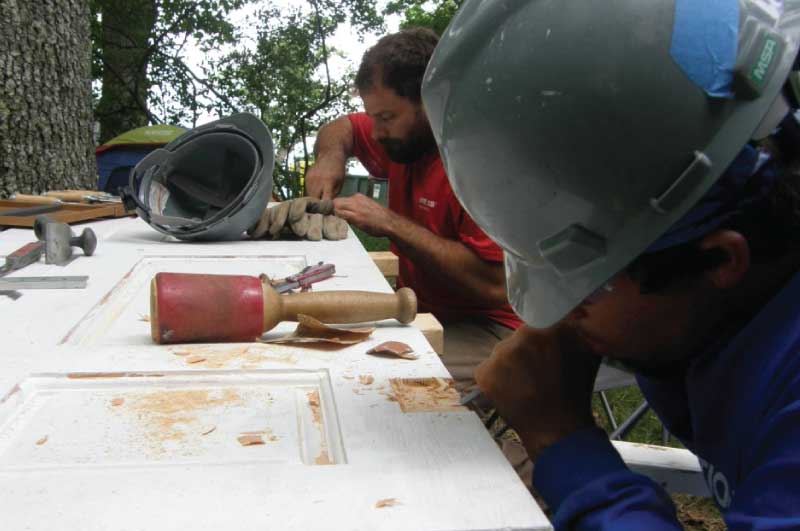
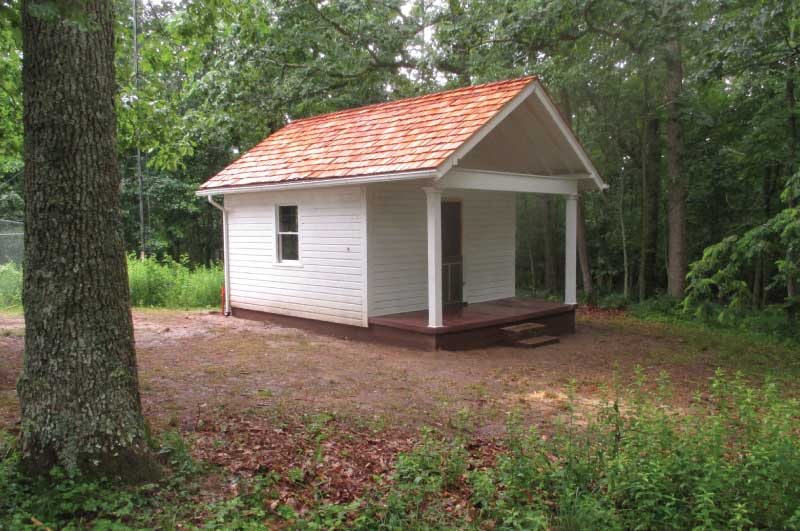
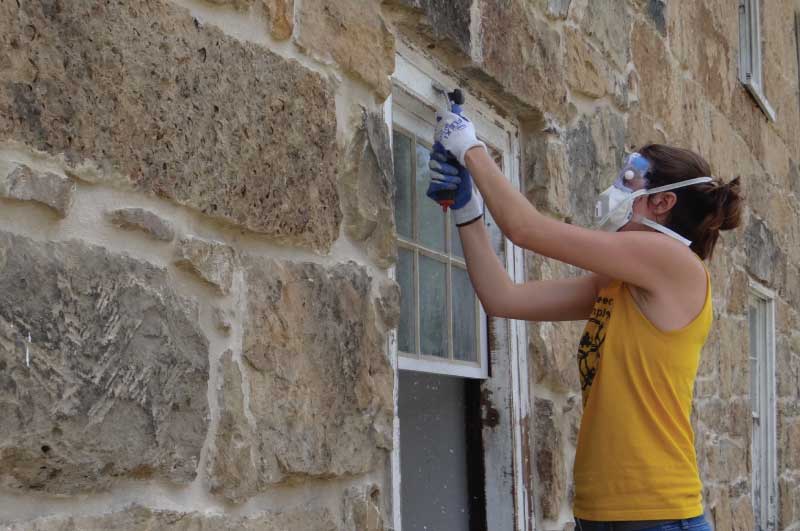
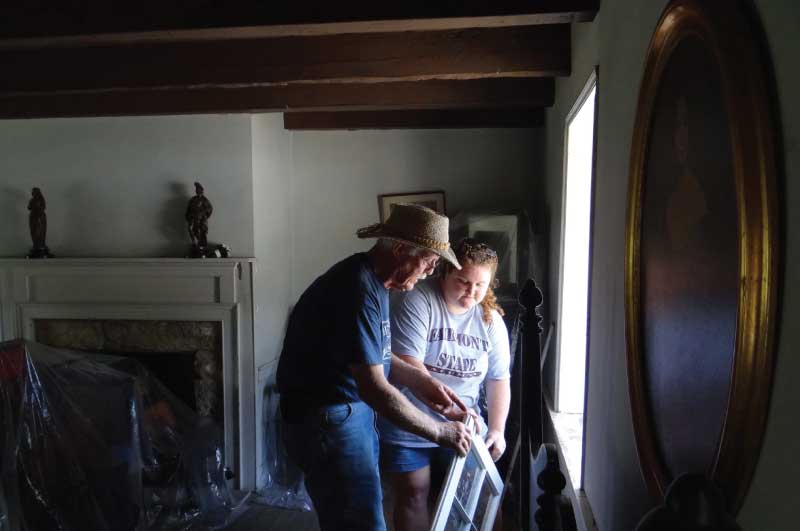
 RSS Feed
RSS Feed



